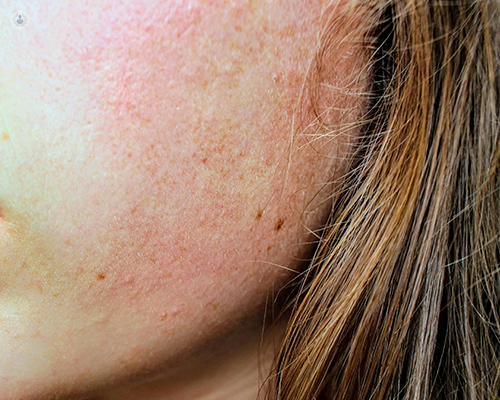Spotting the difference: How to identify and treat common benign skin lesions
Written in association with:Benign skin lesions are a frequent issue that affects many people, and while they are non-cancerous, they can still cause discomfort or aesthetic issues. Understanding how to identify and treat these lesions can help patients make informed decisions about their skin health. In this article a leading plastic surgeon tells us all about it.

What are benign skin lesions?
Benign skin lesions are growths or abnormalities on the skin that are non-cancerous and do not spread to other parts of the body. They can appear in various forms, including moles, warts, and cysts. Although they are harmless, some may cause irritation or discomfort, especially if they grow in sensitive areas or are frequently irritated by clothing or jewellery.
What are the most common types of benign skin lesions?
There are several common types of benign skin lesions, each with its own characteristics:
- Seborrhoeic keratosis: these are raised, warty-like growths that are often brown, black, or tan. They commonly appear on the face, chest, or back and tend to increase with age.
- Dermatofibromas: these firm, small bumps usually appear on the legs and may feel tender or itchy. They often form after minor skin injuries like insect bites.
- Lipomas: soft, fatty lumps that grow under the skin. They are usually painless and can appear anywhere on the body.
- Cherry angiomas: small, red or purple spots caused by dilated blood vessels. These are typically found on the torso and increase in number with age.
- Moles (Nevi): pigmented spots that can be flat or raised. Most moles are harmless but should be monitored for any changes in size, shape, or colour.
How can I tell if a skin lesion is benign?
While benign skin lesions are non-cancerous, it’s essential to monitor them for any changes. The key characteristics of a benign lesion are:
- Symmetry: the lesion is typically symmetrical, meaning both sides look alike.
- Borders: The edges are smooth and regular.
- Colour: a consistent colour throughout, without sudden changes or multiple colours.
- Diameter: benign lesions are generally smaller than 6mm, although larger lesions can still be harmless.
- Evolving: benign lesions typically do not change rapidly in size, shape, or colour.
However, any lesion that exhibits rapid changes, bleeds, or becomes painful should be evaluated by a doctor to rule out malignancy.
When should I see a doctor?
You should consult a doctor if you notice:
- Rapid growth of a lesion.
- Irregular borders or multiple colours.
- Bleeding or ulceration.
- Lesions that are painful or itchy.
In some cases, a biopsy may be performed to rule out skin cancer.
How are benign skin lesions treated?
Treatment for benign skin lesions is often cosmetic, but it may be necessary if the lesion is causing discomfort. Common treatment options include:
- Cryotherapy: freezing the lesion with liquid nitrogen to remove it. This is effective for warts and seborrhoeic keratosis.
- Excision: surgically removing the lesion with a scalpel, typically used for lipomas or moles.
- Laser Therapy: targeted lasers can remove small lesions like cherry angiomas or warts.
- Curettage and Electrocautery: scraping the lesion and using heat to destroy the remaining tissue.
These procedures are often quick, performed under local anaesthesia, and have minimal downtime.
Are there any risks associated with removing benign lesions?
While removing benign lesions is generally safe, there are some potential risks:
- Scarring: depending on the size and location of the lesion, a scar may form after removal.
- Infection: as with any surgical procedure, there is a small risk of infection at the removal site.
- Recurrence: some lesions, particularly warts or seborrhoeic keratosis, may return after treatment.
A doctor will discuss the risks and benefits of removal based on the individual lesion and the patient’s medical history.
Can benign skin lesions turn cancerous?
Most benign skin lesions do not pose a risk of turning cancerous. However, some types of moles (such as atypical or dysplastic nevi) have a higher risk of developing into melanoma, a form of skin cancer. Regular skin checks and monitoring any changes in existing lesions can help detect problems early.
Arrange a consultation via his Top Doctors profile.


